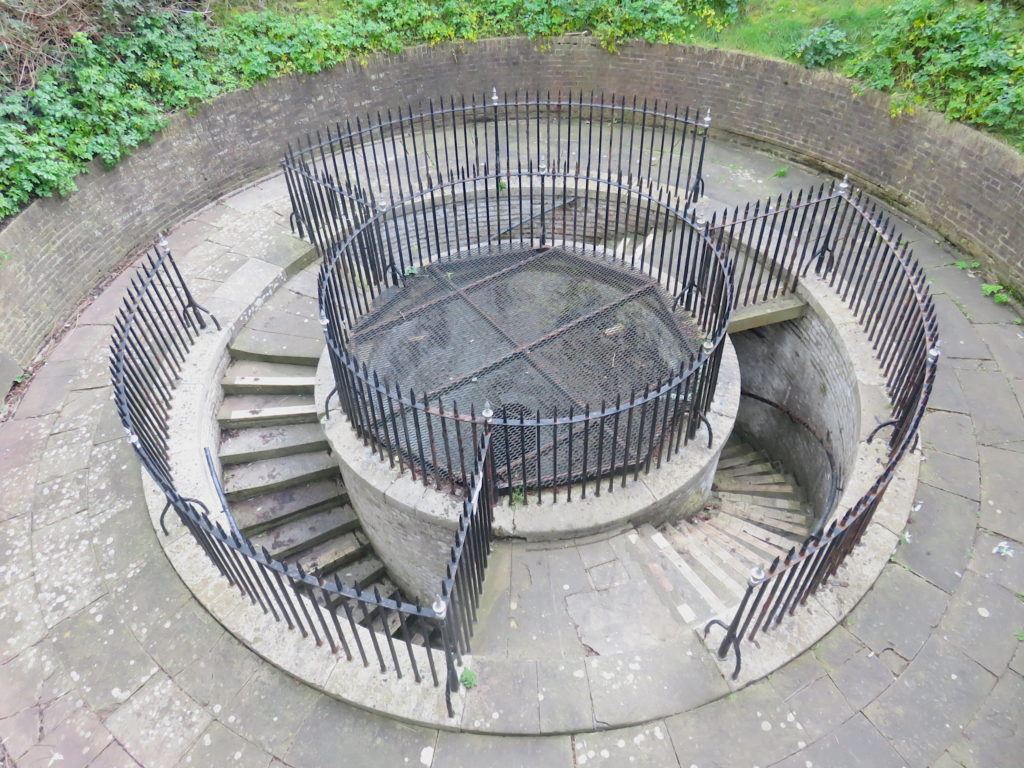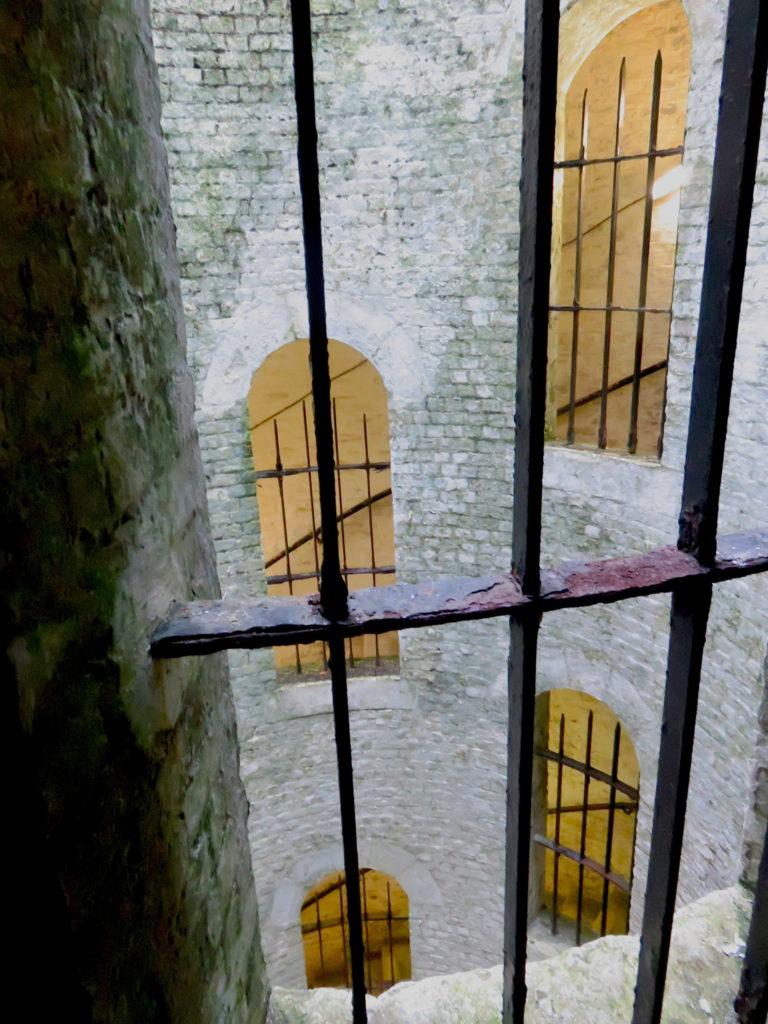The White Cliffs of Dover are an iconic feature of the English coastline, being the first or last sight of England for both travellers and invaders alike, and an important part of British defences for centuries. Several hidden architectural gems, including the Grand Shaft on the Western Heights, can still be seen today.
Rewind over two centuries and in 1803 Napoleon’s army, visible across the channel only 20 miles away, precipitated urgent fortifications of Britain’s defences along the coast. Three years later a shaft was cut at the cliff edge in Dover to allow soldiers access to the harbour 140ft below.
This unique structure, a triple helix staircase, 202 steps on each staircase, wound around a central light well, was designed by Brigadier-General William Twiss, also responsible for the Royal Military Canal running from Hythe to Rye, and the Martello Towers along the south and east coasts of England.

On our visit last month, a gloriously sunny spring day, with clear views to France, (no marauders in sight), we descended the staircases of the shaft – with a great deal of curiosity.
The atmosphere was palpable, hearing our own footsteps echoing up and down. As we climbed in their boots, it was easy to imagine a battalion of soldiers making a dash from their barracks to defend the port in the face of an attack on Dover and Britain.

The Western Heights and its strange military archaeology are protected by four miles of ditches, and it became a military town with a church, school and gymnasium and married quarters.
The soldiers’ wives living in the barracks were known collectively as ‘On the Strength’, and those at home ‘Off the Strength’ in army lingo. Eventually the staircases became segregated, bowing to Victorian social rules according to local legend – one for ‘Officers and their ladies’, one for ‘Sergeants and their wives’ and the third for ‘Soldiers and their women’.
The White Cliffs have also had other countless starring roles, including – famously – the James Bond film Moonraker; they’re also mentioned in the closing of William Shakespeare’s King Lear, hence Shakespeare’s Cliff to the west of the town.
If, by any chance you are travelling to Dover by train in the southerly direction, you’ll pass through the aptly named Shakespeare’s Tunnel.
But sadly, despite a pleasing alliteration, there’s no Shakespeare’s Shaft, either grand or otherwise.
All images Julia Riddiough. Main: Dover Harbour: View from the Grand Shaft upper entrance, France in the distance


